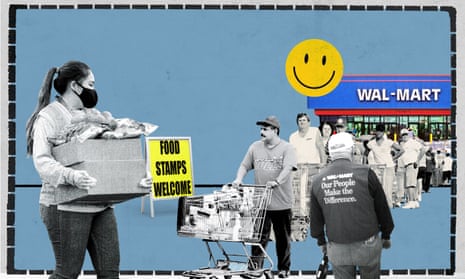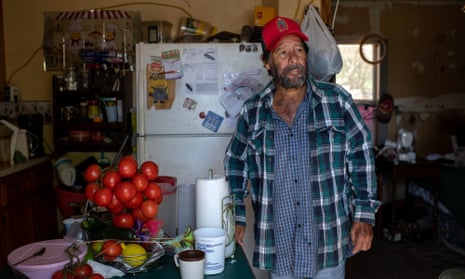
98%market shareowned by 4 firms

97%market shareowned by 4 firms

94%market shareowned by 4 firms

94%market shareowned by 4 firms

93%market shareowned by 3 firms

91%market shareowned by 4 firms

87%market shareowned by 4 firms

87%market shareowned by 4 firms

85%market shareowned by 4 firms
.png)
85%market shareowned by 3 firms
Revealed: the true extent of America’s food monopolies, and who pays the price

83%market shareowned by 3 firms

82%market shareowned by 3 firms

81%market shareowned by 4 firms

81%market shareowned by 4 firms

80%market shareowned by 3 firms

79%market shareowned by 4 firms
.png)
79%market shareowned by 3 firms

77%market shareowned by 4 firms

76%market shareowned by 4 firms

75%market shareowned by 4 firms

75%market shareowned by 4 firms

73%market shareowned by 3 firms

72%market shareowned by 4 firms

71%market shareowned by 4 firms

70%market shareowned by 4 firms

69%market shareowned by 4 firms

68%market shareowned by 4 firms

68%market shareowned by 4 firms

67%market shareowned by 4 firms

66%market shareowned by 4 firms

66%market shareowned by 3 firms

64%market shareowned by 4 firms

62%market shareowned by 4 firms
.png)
61%market shareowned by 4 firms

61%market shareowned by 4 firms

60%market shareowned by 4 firms

59%market shareowned by 2 firms
.png)
58%market shareowned by 4 firms

58%market shareowned by 4 firms

58%market shareowned by 4 firms

56%market shareowned by 4 firms

55%market shareowned by 4 firms

54%market shareowned by 4 firms

53%market shareowned by 4 firms

52%market shareowned by 4 firms

52%market shareowned by 4 firms

52%market shareowned by 4 firms

51%market shareowned by 4 firms

50%market shareowned by 4 firms

49%market shareowned by 4 firms

47%market shareowned by 4 firms

41%market shareowned by 4 firms

39%market shareowned by 4 firms

36%market shareowned by 4 firms

33%market shareowned by 4 firms

32%market shareowned by 4 firms

29%market shareowned by 4 firms

23%market shareowned by 4 firms

23%market shareowned by 4 firms

22%market shareowned by 4 firms
Investigation shows scale of big food corporations’ market dominance and political power
Illustrations by Julia Louise Pereira
A handful of powerful companies control the majority market share of almost 80% of dozens of grocery items bought regularly by ordinary Americans, new analysis reveals.
A joint investigation by the Guardian and Food and Water Watch found that consumer choice is largely an illusion – despite supermarket shelves and fridges brimming with different brands.
In fact, a few powerful transnational companies dominate every link of the food supply chain: from seeds and fertilizers to slaughterhouses and supermarkets to cereals and beers.
The size, power and profits of these mega companies have expanded thanks to political lobbying and weak regulation which enabled a wave of unchecked mergers and acquisitions. This matters because the size and influence of these mega-companies enables them to largely dictate what America’s 2 million farmers grow and how much they are paid, as well as what consumers eat and how much our groceries cost.
It also means those who harvest, pack and sell us our food have the least power: at least half of the 10 lowest-paid jobs are in the food industry. Farms and meat processing plants are among the most dangerous and exploitative workplaces in the country.
Overall, only 15 cents of every dollar we spend in the supermarket goes to farmers. The rest goes to processing and marketing our food.
The Guardian and Food and Water Watch investigation into 61 popular grocery items reveals that the top companies control an average of 64% of sales.
We found that for 85% of the groceries analysed, four firms or fewer controlled more than 40% of market share. It’s widely agreed that consumers, farmers, small food companies and the planet lose out if the top four firms control 40% or more of total sales.
Our investigation is based on the analysis of market share data from thousands of supermarkets across the US.
“It’s a system designed to funnel money into the hands of corporate shareholders and executives while exploiting farmers and workers and deceiving consumers about choice, abundance and efficiency,” said Amanda Starbuck, policy analyst at Food & Water Watch.
The consolidation runs deep: four firms or fewer controlled at least 50% of the market for 79% of the groceries. For almost a third of shopping items, the top firms controlled at least 75% of the market share.
For instance, PepsiCo controls 88% of the dip market, as it owns five of the most popular brands including Tostitos, Lay’s and Fritos. Ninety-three per cent of the sodas we drink are owned by just three companies. The same goes for 73% of the breakfast cereals we eat – despite the shelves stacked with different boxes.






.jpg)


.jpg)
.jpg)
.jpg)




